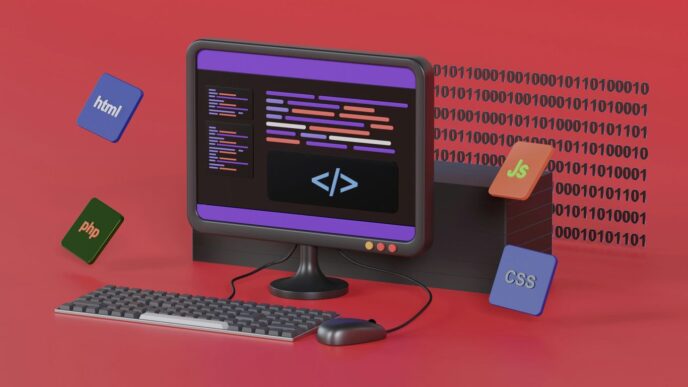Getting ready for your first job interview can be nerve-wracking, especially when you know you’ll have to introduce yourself right away. A good self introduction sample for job interview fresher PDF can help you feel more prepared and confident when you walk into the room. In this article, I’ll walk you through what to include, how to avoid common mistakes, and even share some downloadable templates for 2025. Whether you’re applying for a technical job or something more creative, these tips and samples will help you make a solid first impression.
Key Takeaways
- Keep your introduction short—aim for about one minute and focus on the most relevant details.
- Highlight your academic background and any projects or internships that match the job requirements.
- Show both technical and soft skills, but avoid listing everything—pick what fits the role best.
- Practice your introduction so it sounds natural, not memorized, and always tailor it to the company and job.
- Download and adapt the provided self introduction sample for job interview fresher PDF to suit your own background and goals.
Key Elements of a Strong Self Introduction Sample for Job Interview Fresher PDF
Getting your self introduction right at a job interview can make all the difference, especially if you’re a fresher aiming to stand out. A well-built self introduction isn’t a long-winded life story—it’s a focused snapshot of what the interviewer really needs to know. Let’s break down what a strong introduction should include, with some useful tips to keep you on track.
Structuring Your Introduction Effectively
The flow of your introduction really matters. Sticking to an easy-to-follow structure keeps things clear for both you and the interviewer. Many effective introductions for freshers use this format:
- Greeting and your name.
- Brief summary of your education.
- Key skills or strengths that relate to the job.
- Something about why you’re interested in this position or company.
For example, as explained in this concise overview, starting with these basics ensures you cover all the essentials and avoid rambling.
Highlighting Relevant Academic Background
You don’t need to recite your transcript—focus on what’s most relevant.
- Mention your degree, major, and university.
- Add any relevant coursework or certifications.
- Spotlight academic achievements tied to the job.
A quick table like this can help you sort what’s worth mentioning:
| Academic Info | Should I Mention? |
|---|---|
| Degree & College | Yes |
| GPA | Only if specifically asked |
| Unrelated activities | No |
| Relevant projects | Yes |
Showcasing Technical and Soft Skills
Companies want to know what you can do—not just what you know. If you have technology, languages, or leadership abilities, mention them briefly, but always tie them back to the role you want.
- Technical skills: List those that match the job description.
- Soft skills: Communication, teamwork, problem-solving.
- Short project or internship stories: How you used those skills.
Use between 2-4 points, max, or you’ll lose your listener.
Expressing Genuine Interest in the Position
Finally, let the interviewer know why you actually want the job. Don’t fake it—find a reason that’s true for you.
- Share what excites you about the company or role.
- Link your career goals to what this position offers.
- Say how you hope to add to the team.
Just one or two sentences makes a big impact. If you’re honest about your motives, the interviewer is much more likely to see you as a good fit.
In short, being clear, organized, and sincere is the best way to open any interview as a fresher.
Tips to Personalize Your Self Introduction for Maximum Impact
Personalizing your self-introduction can help you stand out during your job interview, especially if you’re a fresher. Rather than repeating standard lines or memorizing someone else’s script, think about the company you’re meeting and the job you want—and how you can genuinely connect your background to what they’re looking for.
Adapting to Different Job Roles and Companies
You can’t use the same introduction for every job. Each role (and each company) comes with its own set of expectations, required skills, and even company values. Here’s how you can adjust your introduction:
- Research the company’s mission and culture.
- Change which of your skills or experiences you highlight based on the job description.
- Mention specific projects, technologies, or activities that fit what the company wants.
For example, if you’re applying for a technical position, spotlight a relevant academic project. If the company is known for its teamwork, say a few words about a group project you enjoyed.
Sounding Authentic and Confident
It’s tempting to sound ultra-professional, but authenticity goes a long way. People can tell if you’re being yourself. Try these tips:
- Smile and maintain eye contact (even if you’re nervous!).
- Use examples that really happened to you, not general statements.
- If you prepare ahead, practice in a way that doesn’t make your delivery sound robotic.
- Acknowledge your learning curve as a fresher, but frame it in a positive, can-do way (e.g., "I’m excited to grow and take on new challenges").
Practice in front of a mirror, or record yourself. More confidence tips for self-introductions can be found with these job interview confidence tips.
Using Positive and Clear Language
Often, interviews move quickly, and first impressions matter. Your words should give a sense of energy and decisiveness. Here’s a simple list of how to keep things upbeat and understandable:
- Replace negatives with positives. Instead of "I don’t have experience," try, "I look forward to learning new skills."
- Keep sentences short. Don’t over-explain or add unnecessary background.
- Cut out filler words like “umm,” “like,” or “you know.”
- End on a hopeful note—a genuine "I’m happy to be here today" can leave a good impression.
A quick table on DOs and DON’Ts for clarity:
| DO | DON’T |
|---|---|
| Use simple language | Use jargon or big words |
| Show enthusiasm | Sound bored or disinterested |
| Focus on what matters | Share unrelated details |
If you mix these approaches, your introduction will likely come across as sincere, direct, and memorable. Remember, it’s about showing who you are and why you’re a good fit—not just reciting your resume.
Common Mistakes to Avoid in Your Self Introduction Sample for Job Interview Fresher PDF

It might feel daunting to start an interview with a self-introduction, but making a few common mistakes can really hold you back. Let’s break down what freshers like you should watch out for, so you can sidestep these pitfalls from the start.
Sharing Irrelevant Personal Details
One of the first slip-ups is talking about stuff that doesn’t really matter for the job.
- Avoid going into family background, hometown stories, or random facts unless asked directly.
- Focus on your academic path or the skills that connect you to the role.
- Remember, too much personal info makes your introduction sound less professional.
Speaking for Too Long or Too Short
Timing is tricky, but if you go way too long, people check out. Too short, and it seems like you haven’t prepared.
| Introduction Length | Impression Left |
|---|---|
| Less than 30 seconds | Feels underprepared |
| 30 seconds – 1 minute | Just right, focused |
| More than 2 minutes | Risks boring the interviewer |
Keep your self-introduction around a minute. Sticking to the main points helps you stay on track and shows respect for the interviewer’s time.
Appearing Underprepared or Overconfident
Stepping into an interview with no plan or sounding like you know everything can both hurt your chances. There’s a sweet spot:
- Practice your intro but don’t memorize it word for word; authenticity matters.
- Being too rehearsed makes you seem robotic, while total improvisation can make you stumble.
- Show willingness to learn and adapt, instead of acting like you have all the answers.
Finding that balance will help you come across as both confident and humble. For more pointers on keeping your introduction effective and concise, check tips from focusing on professional achievements which highlight how to align your skills and goals with the job.
If you catch yourself making any of these mistakes, don’t stress. Practice in front of friends or a mirror, and keep your focus on what truly matters for the role—this way, you’ll start strong and make a lasting impression.
Sample Self Introduction Templates for Freshers (Downloadable PDF)
It’s no secret—most people freeze up a little when someone says, "Tell me about yourself." If you’re just starting your career, it can feel even tougher to find the right words. But a solid introduction will help you stand out in that first crucial minute. Here are three different templates, each with a specific style, that you can adapt for your next job interview. We’ve also included a link at the end to download them as a PDF.
Formal Self Introduction Sample
This version is best if you’re interviewing with a traditional company or for a conservative role.
“Good morning! My name is Ananya Sharma, and I recently graduated with a Bachelor in Commerce from Delhi University. During my studies, I completed internships in accounting and worked on several team projects that improved my attention to detail. I am flexible, a quick learner, and interested in starting my career in finance. I’m looking forward to contributing my skills to your team and growing within the organization.”
What makes this effective?
- Professional greeting
- Clear academic background
- Highlights one or two relevant experiences
- Shows eagerness to join and contribute
Enthusiastic and Aspirational Introduction Example
Go for this template if the company feels dynamic or values drive and ambition.
"Hello, I’m Rajiv Singh! I finished my B.Tech in Computer Science at Anna University, where I led my class project on smart apps and coordinated our college tech festival. I thrive in creative environments and am always looking for new challenges. Your company is known for innovation, which is why I’m excited about the idea of joining the team. I’m confident I can learn quickly and help build something great together."
Why this one works:
- Friendly, informal opening
- Shows leadership and passion projects
- Explains why you want this job, specifically
- Focuses on growth and positive attitude
Skill-Focused Introduction Template
This is handy when the job is all about specific abilities—think IT, analytics, or technical roles.
"Good afternoon. My name is Priya Mehta. I hold a degree in Statistics from Mumbai University, and I’ve worked on data analysis projects using Excel and Python for my internship at a local start-up. I enjoy solving new problems and believe my technical background, alongside my commitment to accuracy, matches well with the requirements of this analyst role."
Why use this style?
- Lead with your technical skills
- Mention specific tools or knowledge
- Relate your skills directly to the job needs
- Professional, but still personal enough
Downloadable PDF Templates
Want to take these with you?
Get all three self-introduction templates ready to edit in PDF format here: Download Self Introduction Samples for Freshers – 2025 PDF
A quick checklist before you use any template:
- Replace all sample names, degrees, and experiences with your details
- Keep your intro under one minute
- Read it out loud—aim for it to sound like you, not like a robot
Pick the one that feels most natural and tweak it until it’s your own. Sometimes you’ll need to mix and match depending on the company, but these samples should get you started.
How to Practice and Deliver Your Introduction During Interviews
When you’re new to job interviews, saying the right things is only half the work. How you practice and then share your introduction in the moment matters just as much. Nerves hit everyone, especially freshers, but with some know-how and repetition, you can show up confident and calm. Here’s how to get comfortable and make a great impression from the very beginning.
Maintaining Good Body Language
Sometimes your posture or gestures say more than your words. Strong body language helps you look confident and interested, even if you’re shaking inside.
- Sit up straight to show you’re engaged. Slouching can make you seem bored or insecure.
- Use your hands naturally while you speak. Don’t keep them stuffed in your lap or flailing around.
- Nod when the interviewer is talking — this shows you are listening.
- Practice your body language in front of a mirror or with a friend so it feels natural.
This kind of thoughtful presentation doesn’t just help you look prepared — it can also set the right tone for the rest of the meeting, a bit like making a concise self-introduction in a sales call.
Making Eye Contact and Smiling
It sounds simple, but these two things have a huge effect:
- Making eye contact shows respect and keeps the conversation personal.
- Don’t stare. Glance away sometimes, especially while listening.
- Smiling makes you seem friendly and approachable. Even a small, genuine smile relaxes both you and the interviewer.
If you aren’t used to making much eye contact, practice with someone you trust, or record yourself and check how you come across.
Handling Nervousness and Pauses Effectively
Most people worry about awkward silences or stumbling over words. Here are some steps to keep yourself from falling into those traps:
- Practice your introduction several times out loud, so you know what you want to say, but don’t memorize it all word-for-word.
- If you lose your place, pause for a breath. Small breaks are normal, and you’ll seem more thoughtful than rushed.
- If you say ‘um’ or ‘like’ too much, slow down. Pausing is better than using filler words.
- Step back mentally and remind yourself: the interviewer expects some nerves, especially for freshers.
- Use short notes or keywords in your prep, not a script — this keeps your delivery flexible and natural.
Practicing these small details might seem like overkill, but after a few tries, you’ll find your introduction becomes smoother and more comfortable. The first impression you make isn’t about having every word perfect — it’s about sounding prepared but real.
Customizing Your Introduction to Align with Company Culture
When you’re heading into an interview, you might feel like you’re supposed to have a perfect script, but honestly, what works best is showing you’ve done your homework—and that you care about being a fit for this specific place. Matching your introduction to the company’s culture makes you instantly more relatable and memorable than a generic opening ever could. Here’s how you can make your introduction stand out for the right reasons.
Researching the Organization Before the Interview
It’s way easier to fit in when you have some idea of what the company’s about. Some questions to guide your research:
- What are the company’s core values and mission statement?
- Do they celebrate teamwork, or do they spotlight individual effort?
- Is the environment more formal, or laid-back?
Try browsing their website, recent news stories, and company socials. You’ll quickly get a feel for what matters to them and how you can fit in. Mentioning something specific, like a recent achievement or event, in your introduction shows you aren’t just winging it.
| Company Research Checklist | Where to Look |
|---|---|
| Core values & mission | Company website (About page) |
| News & achievements | News articles, Press releases |
| Work environment clues | Social media, Employee reviews |
Connecting Your Goals with the Company’s Mission
Companies want to see that you’re not just another applicant eager for any job; they want people who care about what they care about. For example, if their mission statement emphasizes innovation, mention how you like coming up with new ideas or solving tricky problems. If they talk a lot about teamwork, share a story where you worked well in a group.
Some quick ways to make this connection:
- Start with their mission or a value that caught your attention.
- Briefly share how it matches your own outlook or goals.
- Explain how you hope to build on this if you get the job.
Demonstrating Enthusiasm for Growth Opportunities
Let’s be honest, hiring managers like to see that you’re not just using them as a stepping stone for any old job—they want someone who sees their company as a place to grow. Don’t be afraid to admit you want to learn! Maybe mention a skill you’re eager to build, or a project you’d love to get involved in that you saw on their page.
Here are a few ways to show your interest in growing with the company:
- Mention a training program, mentorship, or growth path the company highlights.
- Share your curiosity about learning from experienced team members.
- Express your willingness to take on new projects or challenges as they come up.
And remember, your introduction isn’t just about what you say. Presenting yourself professionally in interviews, both in what you say and how you act, tells the company you respect their culture, right from the start (present yourself professionally).
Keep it natural, be specific where you can, and remember: it’s about finding the right fit—for both you and the company.
Conclusion
Wrapping things up, a good self-introduction can really set the tone for your job interview, especially if you’re just starting out. It’s not about memorizing a perfect script, but about knowing what you want to say and practicing it until it feels natural. Keep it short, stick to the point, and focus on what makes you a good fit for the job. Remember, everyone gets nervous, but a little preparation goes a long way. Try out the templates, tweak them to match your story, and don’t be afraid to show a bit of your personality. With some practice and a positive attitude, you’ll walk into that interview ready to make a solid first impression. Good luck out there!
Frequently Asked Questions
How should I start my self-introduction as a fresher in a job interview?
Begin with a friendly greeting and your name. For example, you can say, “Good morning, my name is [Your Name].” This sets a positive tone and shows you’re polite and ready.
What details should I include in my self-introduction?
Share your educational background, any key skills you have, and a little about why you’re interested in the job. Keep it focused on things that matter for the job you want.
How long should my self-introduction be?
Try to keep your introduction between 30 seconds to 1 minute. This is enough time to talk about your background and skills without making it too long or too short.
Is it okay to talk about my hobbies or personal interests?
You can mention hobbies if they show skills or qualities that are good for the job, like teamwork or leadership. But don’t share too many personal details that don’t relate to the job.
What if I don’t have any work or internship experience?
That’s okay! You can talk about projects you did in school, group activities, or any volunteering. Show that you’re eager to learn and ready to take on new challenges.
Should I use the same self-introduction for every interview?
It’s better to change your introduction a little for each job. Learn about the company and the role, then talk about the skills or experiences that match what they’re looking for.














